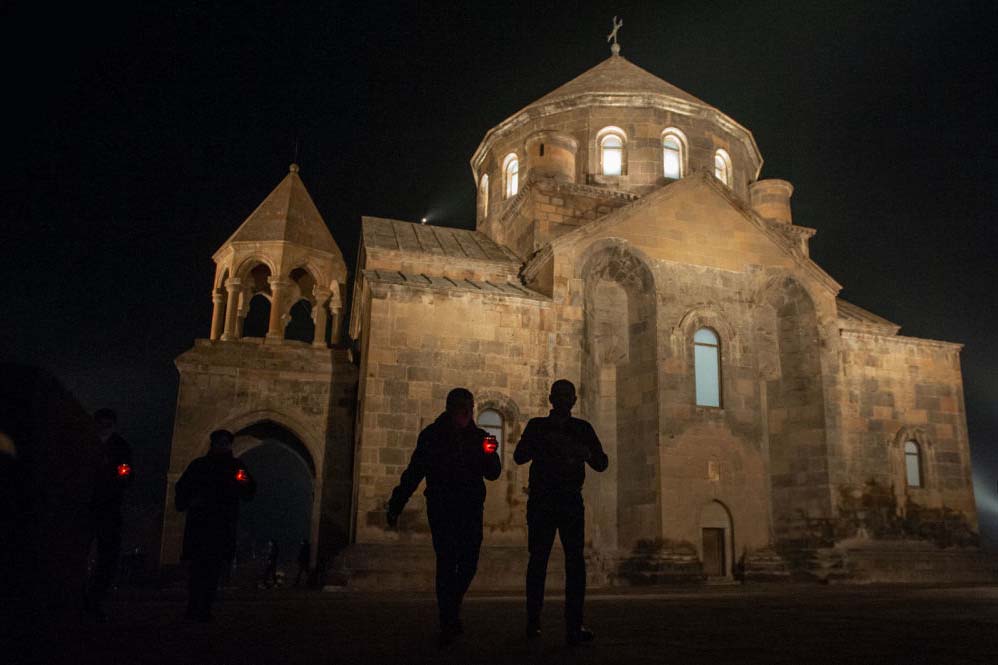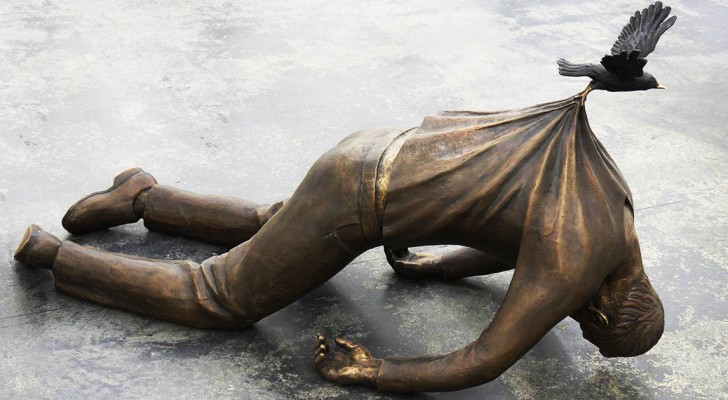
As the possession of the church, the Badarak can certainly be shortened, expanded or otherwise modified. This would presumably be undertaken by the Catholicos, guided by the wisdom of the synod of bishops and other experts in the history and theology of the liturgy. It must be noted, however, that the Armenian Church does not seem ever to have convoked a synod, or promulgated canons that would have removed elements of the Badarak to make the service shorter. So far in the history of the Armenian Church, shortening the Divine Liturgy has not been a matter of concern for the hierarchy.
Rather than shortening it, the canons of the church exhibit an overwhelming tendency to expand the Liturgy, usually by restoring elements of the service that have previously fallen out of use. Historians of the liturgy have observed a universal phenomenon, whereby liturgy tends to grow spontaneously as its devout practitioners, over the centuries, adorn it with new, prayerful and musical compositions that reflect their Christian faith and reverence.
Eventually the service grows to the point where the worshipping community can no longer sustain the weight of service; the music may become too challenging for the choir, or the number and length of the prayers may become excessive and impractical. At that point, the Liturgy will tend to reduce itself spontaneously: priests will begin to abbreviate the prayers or simplify a ritual, for example, or the choir will chant a simpler version of a hymn or omit it entirely. If not checked by church authorities, these ad hoc adjustments spread and take root, eventually becoming a fixed part of the tradition.
Such scaling down of the liturgy is never planned or sanctioned by church officials. It just happens. Often the reduction or abbreviation may even be at odds with the intended function and meaning of the Liturgy. The Armenian corpus of Canon Law is filled with canons that seek to rehabilitate an old liturgical usage that long ago fell out of use through this sort of attrition.
We can find numerous examples of this sort of spontaneous abbreviation under way today in our Badarak. Tire choir’s response, “Der voghormya kez Dyarnut hantsun yegheetsook Der voghormya, Der voghormya, Der voghormya,” is chanted twice during the Badarak at the end of deacon’s litanies. It is nothing but a chain of acclamations that were originally three separate responses to individual deacon’s petitions. The responses have been plucked out of this dialogue with the deacons and fused together to form one composite response: “Lord have mercy, to you Lord we commit ourselves, Lord have mercy, Lord have mercy, Lord have mercy” (Originally: (1) Lord have mercy; (2) To you, Lord we commit ourselves; (3) Lord have mercy. Lord have mercy. Lord have mercy). The deacons’ petitions that should punctuate the individual responses are either whispered softly while the choir sings, or, more commonly, omitted entirely.
As it stands, the composite phrase has no meaning and is absurd. The effect would be something like concocting this phrase:
“Hi how are you? Couldn’t be better, I’m going to get some sun today, you too.”
By fusing together the alternate lines in the dialogue:
“Good morning”
“Hi. How are you?”
“Just fine, thanks. Great weather, eh?”
“Couldn’t be better. I’m going to get some sun today.”
“You do that. Have a great day.”
“You too.”
Here is a classic example of spontaneous reduction of the liturgy that is taking place before our very eyes. The composite response came about as a way to streamline the litany by expediting or eliminating those final petitions that are repeated two or three times during the course of the Badarak. No Catholicos, synod or bishop ever authorized this abbreviation. No committee of experts ever deliberated whether this contraction is appropriate or even theologically legitimate. It just happened. And it is now universal. One hears this composite response everywhere, from the smallest parish in the United States to the Mother Cathedral of Holy Etchmiadzin. The downside of the abbreviation is not only that it is meaningless; it has also resulted in the deletion of some of the most theologically significant and distinctively Armenian petitions in the entire Divine Liturgy.
An even simpler example of spontaneous shortening of the Liturgy is the omission of the Old Testament Scripture reading. Every Sunday before the chanting of the Holy Gospel, Scripture readings are appointed to be read from the Old Testament (usually the Prophets) and the New Testament Epistles or Acts of the Apostles. It has become customary in many places to skip the Old Testament reading, usually because of the additional time required to read the Scriptures in the various languages of our people in the United States (Armenian, English, and in some places Russian).
Yet another example is the litany before the Lord’s Prayer. Perhaps because of its prominent place in the Badarak, this litany has attracted the creative interest of Chilingirian, Yegmalian, Gomidas and others who have composed musical settings for our Divine Liturgy (see page 8 above). The various melodies for this litany are indeed exquisite and unlike any others in the Badarak. They are also musically demanding. Only singers with a trained voice will be able to chant these acclamations correctly and beautifully.
Alas, very few parish churches have such resources in their choirs and at the altar. Consequently, it has become customary in many places either to recite the litany and its responses in a spoken voice, or to omit them altogether. Yet again, a component of the Badarak is reducing itself spontaneously. No church authority has authorized the reduction; it is just happening.
There are a number of similar examples of the liturgy “reforming itself” in our midst. In some cases the abbreviation is logical and harmless. In many other cases, however, the adjustment jeopardizes the logical and theological integrity of the Badarak. There are surely better ways to shorten or simplify the Divine Liturgy than by surrendering to spontaneous impulses that lack a sound theological basis or historical precedent. The only way for the Church to avert such ill-advised, impromptu evolution of the Liturgy is by being proactive; by engaging in regular, serious, critical examination of the Liturgy using sound theological and historical approaches.
One final word needs to be said regarding the widespread call to shorten the Badarak, which, as we have seen, is a relatively recent phenomenon in the history of the Armenian Church. Formerly the prevailing instinct of the Armenian people has been creative; Armenians have tended to sing new hymns and prayers to God, expressing their Christian convictions and sentiments in the Badarak and other church services in ever new ways. Today’s impulse toward brevity and conciseness presents a sharp reversal from the attitude of our Armenian Christian ancestors. It would be wise for the Armenian Church as a whole (clergy, laity and theologians) to contemplate this carefully before either accepting or rejecting the call to shorten the Badarak.
Why are so many Armenians convinced that they are spending too much time in church? What are the hallmarks of good, effective liturgy? Accordingly, do we improve or impair the Liturgy by removing redundancies and repetitions? On what basis can a hymn, prayer or ritual of the Badarak be considered expendable? What price would we pay in the spiritual well-being of our people if we were to shorten the Badarak by removing some of its prayers, hymns, rituals or Bible passages? What price is the Armenian Church already paying by allowing the Liturgy to evolve spontaneously? What is preventing the Badarak from capturing the hearts and minds of more people the way a good movie, opera or baseball game does?
What is blocking our people from responding to the Lord’s irresistible and transforming call to be lovingly embraced by him in the Badarak?
Source: Frequently Asked Questions on the Badarak, The Divine Liturgy of the Armenian Church by Michael Daniel Findikyan.

